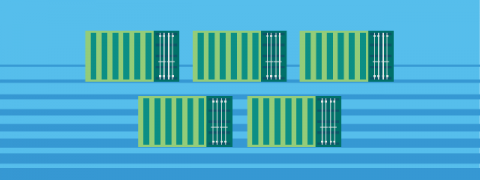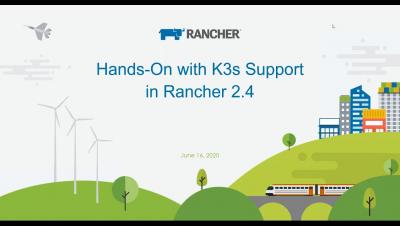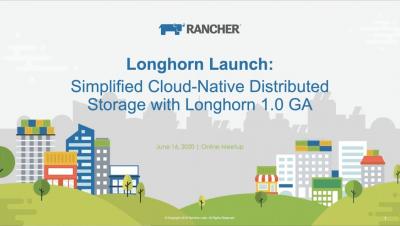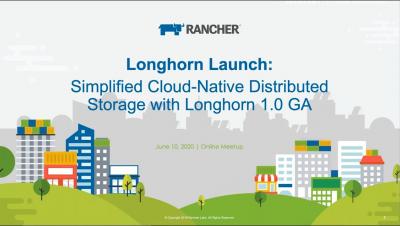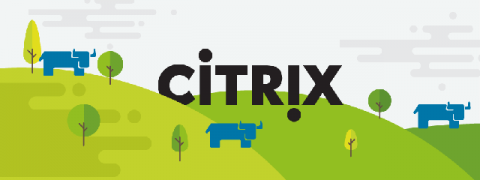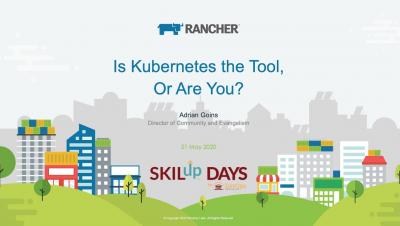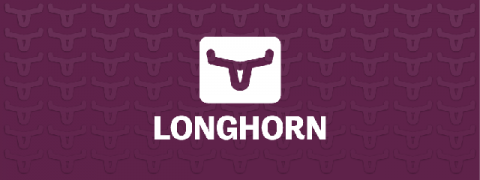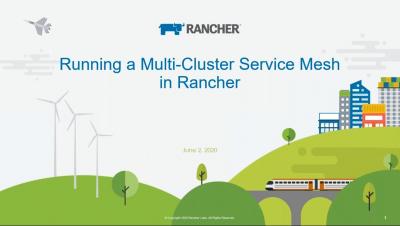Operations | Monitoring | ITSM | DevOps | Cloud
June 2020
Deploy HAProxy Ingress Controller from Rancher's Apps Catalog
In Kubernetes, Ingress objects define rules for how to route a client’s request to a specific service running inside your cluster. These rules can take into account the unique aspects of an incoming HTTP message, including its Host header and the URL path, allowing you to send traffic to one service or another using data discovered in the request itself. That means you can use Ingress objects to define routing for many different applications.
Kubernetes Everywhere Enables Simplified Heterogeneous Deployment: Edge, Prem, Cloud
Since almost the beginning of programming, the idea of write-once and deploy everywhere, on all platforms, has been an unreachable ideal to minimize development costs for cross-platform applications, drive UI consistency and reduce security service area. In programming, the cross-platform languages Java and Python have topped developer utilization charts for decades.
Deploying a Performant PHP Application on Kubernetes with Rancher
PHP is one of the most popular programming languages on the web. It powers many widely used content management systems like WordPress and Drupal, and provides the backbone for modern server-side frameworks like Laravel and Symfony. Despite its popularity, PHP has a bit of a reputation for being slow and hard to maintain. It has gotten better in recent years, but there are two features that high-performance PHP applications will likely need: OPcache and PHP FastCGI Process Manager (PHP-FPM).
Upgrade Your K3s Clusters Smoothly in Rancher 2.4
In Rancher 2.4, the latest release of Rancher Labs’ open source Kubernetes management platform, you can now manage K3s cluster upgrades from the Rancher UI. K3s is a lightweight Kubernetes distribution from Rancher that you can use to set up your development Kubernetes environment within minutes. It is great for production use cases and is built primarily for IOT and Edge devices. In Rancher 2.4, you can import K3s clusters and can manage the upgrades for it via Rancher itself.
How Businesses Can Gain Commercial Value from Kubernetes Deployments
Our very own regional director of Northern EMEA, Jeroen Overmaat, recently joined our partner, Magic Sandbox BV (MSB), for the inaugural episode of Magic Devcast, their new technology podcast. Magic Devcast brings together technology industry personalities and influencers from around the world to discuss how they tackle the ever-changing landscape, how to approach remote work, learning and much more.
KMC - Hands On with K3s Support in Rancher 2.4 - 2020-06-16
Longhorn Launch Webinar - ANZS - 2020-06-16
Building Machine Learning Pipelines with Kubeflow
In part one of this series, I introduced you to Kubeflow, a machine learning platform for teams that need to build machine learning pipelines. In this section, we will learn how to take an existing machine learning project and turn it into a Kubeflow machine learning pipeline, which in turn can be deployed onto Kubernetes. As you are going through this exercise, think about how you can convert your existing machine learning projects into a Kubeflow one.
May 2020 Online Meetup - Simplified Cloud Native Distributed Storage with Longhorn
Bringing Cloud Load Balancer On-Prem with Rancher
The public cloud offers great scalability and flexibility for customers and is a model where service providers make many decisions on their behalf. For example, in cloud service providers like Google Cloud Platform (GCP), Amazon Web Service (AWS) or Microsoft Azure, a cloud load balancer is spun up on demand. The load balancer gets an IP address automatically and your application is ready to be served.
Is Kubernetes the Tool, or Are You?
Deploy a Rancher Cluster with GitLab CI and Terraform
In today’s ever-changing world of DevOps, it is essential to follow best practices. That goes for security, access control, resource limits, etc. One of the most important things in the world of DevOps is continuous integration and continuous delivery, or CI/CD. Continuous integration is a crucial part of an efficient deployment. We are all guilty of repeating manual steps over and over again – especially when it comes to node configuration.
Why Kubernetes is Changing Storage
By 2025, IDC expects worldwide data to grow by 61 percent to 175 zettabytes. This increase in data consumption has contributed to a massive shift within the technology landscape in the last decade, where organizations have been forced to adapt to a digital-dependant world.
Longhorn: Rancher's Journey from Zero to GA
When Frodo was commissioned on a seemingly straightforward journey to retrieve the One Ring, I doubt he realized the adventure and commitment he was embarking on. Rancher Labs started on a similarly daring journey almost four years ago. It didn’t take a wizard showing up uninvited at dinner to convince us of this. From the beginning of Rancher Labs, our founding team had a deep conviction about the importance of storage in the future of cloud-first computing.
Longhorn Simplifies Distributed Block Storage in Kubernetes
Today we’re announcing the general availability of Longhorn, an enterprise-grade, cloud-native container storage solution. Longhorn directly answers the need for an enterprise-grade, vendor-neutral persistent storage solution that supports the easy development of stateful applications within Kubernetes. We’ve been working on Longhorn for almost as long as we’ve been around as a company.







